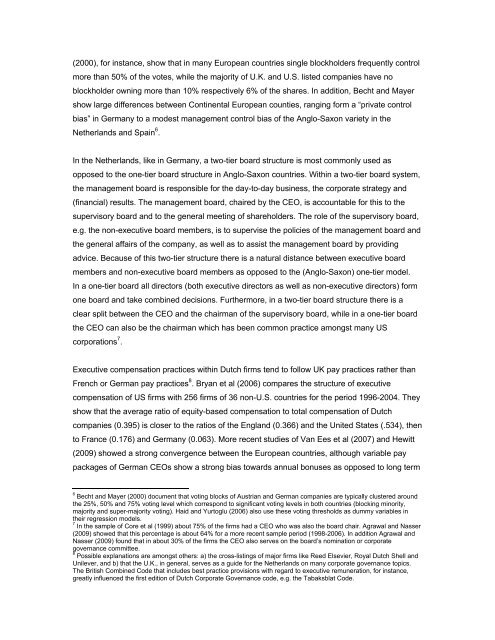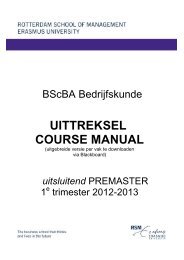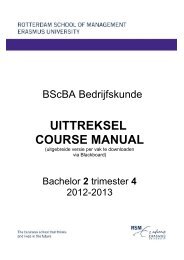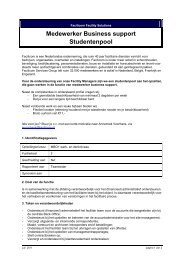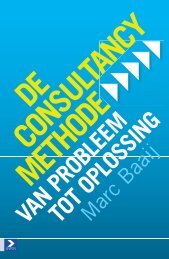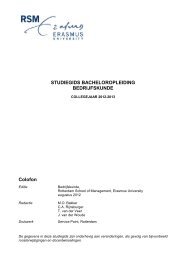Research report - Rotterdam School of Management
Research report - Rotterdam School of Management
Research report - Rotterdam School of Management
You also want an ePaper? Increase the reach of your titles
YUMPU automatically turns print PDFs into web optimized ePapers that Google loves.
(2000), for instance, show that in many European countries single blockholders frequently control<br />
more than 50% <strong>of</strong> the votes, while the majority <strong>of</strong> U.K. and U.S. listed companies have no<br />
blockholder owning more than 10% respectively 6% <strong>of</strong> the shares. In addition, Becht and Mayer<br />
show large differences between Continental European counties, ranging form a “private control<br />
bias” in Germany to a modest management control bias <strong>of</strong> the Anglo-Saxon variety in the<br />
Netherlands and Spain 6 .<br />
In the Netherlands, like in Germany, a two-tier board structure is most commonly used as<br />
opposed to the one-tier board structure in Anglo-Saxon countries. Within a two-tier board system,<br />
the management board is responsible for the day-to-day business, the corporate strategy and<br />
(financial) results. The management board, chaired by the CEO, is accountable for this to the<br />
supervisory board and to the general meeting <strong>of</strong> shareholders. The role <strong>of</strong> the supervisory board,<br />
e.g. the non-executive board members, is to supervise the policies <strong>of</strong> the management board and<br />
the general affairs <strong>of</strong> the company, as well as to assist the management board by providing<br />
advice. Because <strong>of</strong> this two-tier structure there is a natural distance between executive board<br />
members and non-executive board members as opposed to the (Anglo-Saxon) one-tier model.<br />
In a one-tier board all directors (both executive directors as well as non-executive directors) form<br />
one board and take combined decisions. Furthermore, in a two-tier board structure there is a<br />
clear split between the CEO and the chairman <strong>of</strong> the supervisory board, while in a one-tier board<br />
the CEO can also be the chairman which has been common practice amongst many US<br />
corporations 7 .<br />
Executive compensation practices within Dutch firms tend to follow UK pay practices rather than<br />
French or German pay practices 8 . Bryan et al (2006) compares the structure <strong>of</strong> executive<br />
compensation <strong>of</strong> US firms with 256 firms <strong>of</strong> 36 non-U.S. countries for the period 1996-2004. They<br />
show that the average ratio <strong>of</strong> equity-based compensation to total compensation <strong>of</strong> Dutch<br />
companies (0.395) is closer to the ratios <strong>of</strong> the England (0.366) and the United States (.534), then<br />
to France (0.176) and Germany (0.063). More recent studies <strong>of</strong> Van Ees et al (2007) and Hewitt<br />
(2009) showed a strong convergence between the European countries, although variable pay<br />
packages <strong>of</strong> German CEOs show a strong bias towards annual bonuses as opposed to long term<br />
6 Becht and Mayer (2000) document that voting blocks <strong>of</strong> Austrian and German companies are typically clustered around<br />
the 25%, 50% and 75% voting level which correspond to significant voting levels in both countries (blocking minority,<br />
majority and super-majority voting). Haid and Yurtoglu (2006) also use these voting thresholds as dummy variables in<br />
their regression models.<br />
7 In the sample <strong>of</strong> Core et al (1999) about 75% <strong>of</strong> the firms had a CEO who was also the board chair. Agrawal and Nasser<br />
(2009) showed that this percentage is about 64% for a more recent sample period (1998-2006). In addition Agrawal and<br />
Nasser (2009) found that in about 30% <strong>of</strong> the firms the CEO also serves on the board’s nomination or corporate<br />
governance committee.<br />
8 Possible explanations are amongst others: a) the cross-listings <strong>of</strong> major firms like Reed Elsevier, Royal Dutch Shell and<br />
Unilever, and b) that the U.K., in general, serves as a guide for the Netherlands on many corporate governance topics.<br />
The British Combined Code that includes best practice provisions with regard to executive remuneration, for instance,<br />
greatly influenced the first edition <strong>of</strong> Dutch Corporate Governance code, e.g. the Tabaksblat Code.


